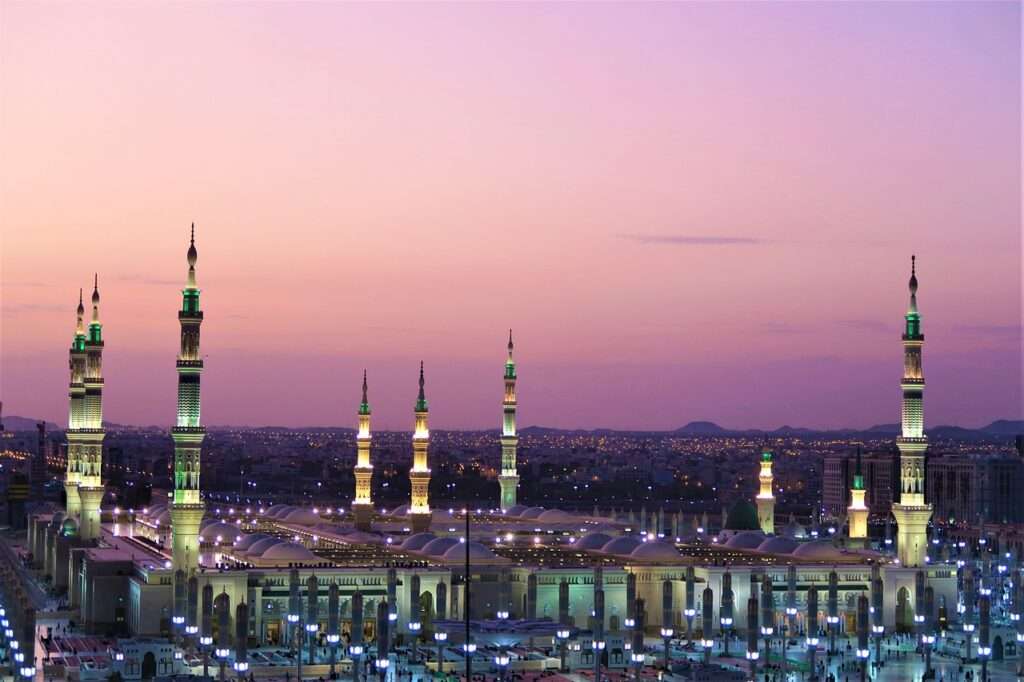Introduction
Saudi Arabia, a land of ancient heritage and cutting-edge modernity, is an enigmatic destination that offers travelers a unique blend of experiences. From the golden sands of the Arabian desert to the bustling streets of Riyadh and the historical marvels of Al-Ula, Saudi Arabia is a treasure trove waiting to be explored. As the country opens its doors to international tourists, now is the perfect time to embark on an unforgettable journey through the heart of the Arabian Peninsula.
Getting There and Around
Saudi Arabia is well-connected by major airlines, with King Khalid International Airport (RUH) in Riyadh, King Abdulaziz International Airport (JED) in Jeddah, and King Fahd International Airport (DMM) in Dammam serving as the main entry points. Once in the country, travelers can take advantage of an expanding network of domestic flights, high-speed trains, and well-maintained highways to explore various regions.
Riyadh: The Modern Metropolis
Start your journey in Riyadh, the capital city and a vibrant hub of business and culture. Visit the National Museum of Saudi Arabia to gain insights into the country’s rich history, from prehistoric times to the present day. The museum’s exhibits include artifacts from the ancient Nabatean civilization, Islamic manuscripts, and interactive displays.
For a taste of modern Saudi Arabia, head to the Kingdom Centre Tower. The 99th-floor Sky Bridge offers panoramic views of the cityscape, especially breathtaking at sunset. Don’t miss Al-Masmak Fortress, a mud-brick fort that played a crucial role in the unification of Saudi Arabia under King Abdulaziz.
Jeddah: Gateway to the Red Sea
Next, fly to Jeddah, a coastal city known for its stunning architecture, vibrant arts scene, and delicious cuisine. The historic Al-Balad district, a UNESCO World Heritage site, is a must-visit. Wander through narrow alleyways lined with coral-stone buildings, traditional souks, and historic mosques.
The Red Sea coast offers excellent opportunities for diving and snorkeling. The pristine coral reefs are teeming with marine life, making it a paradise for underwater enthusiasts. Don’t forget to stroll along the Jeddah Corniche, a scenic waterfront promenade dotted with sculptures, parks, and cafes.
Al-Ula: An Ancient Wonder
One of Saudi Arabia’s most captivating destinations is Al-Ula, home to the ancient city of Hegra (Madain Saleh). This archaeological site, also a UNESCO World Heritage site, features well-preserved tombs carved into sandstone mountains by the Nabateans, the same civilization behind Petra in Jordan.
Beyond Hegra, explore the dramatic landscapes of Al-Ula, with its rock formations, lush oasis valleys, and the iconic Elephant Rock. The Al-Ula Old Town, with its labyrinthine streets and traditional mud-brick houses, offers a glimpse into the past.
The Empty Quarter: A Desert Adventure
For those seeking adventure, a trip to the Rub’ al Khali, or the Empty Quarter, is a must. This vast desert is the largest continuous sand desert in the world, offering an otherworldly landscape of rolling dunes and star-filled night skies. Join a guided desert safari to experience dune bashing, camel riding, and traditional Bedouin hospitality.
Saudi Cuisine: A Culinary Journey
Saudi Arabian cuisine is a reflection of the country’s diverse cultural influences. Indulge in traditional dishes such as Kabsa (a spiced rice and meat dish), Mandi (slow-cooked lamb or chicken with rice), and Mutabbaq (a stuffed pancake). In larger cities, you’ll find a range of international dining options as well.
Cultural Etiquette and Practical Tips
- Dress Code: Modest clothing is recommended, especially for women. In public places, women should wear an abaya, a loose-fitting black cloak, though a headscarf is not mandatory for tourists.
- Social Etiquette: Saudis are known for their hospitality. It’s customary to greet with “As-Salaam-Alaikum” and respond with “Wa-Alaikum-Salaam.” Respect local customs, especially during the holy month of Ramadan.
- Weather: The best time to visit is between October and March when temperatures are cooler. Summers can be extremely hot, especially in inland areas.
Conclusion
Saudi Arabia is a land of contrasts where ancient traditions coexist with modern innovation. Whether you’re exploring historical sites, diving in the Red Sea, or experiencing the vast desert landscapes, Saudi Arabia promises an enriching and unforgettable journey. As the country continues to welcome more visitors, it stands ready to share its stories, culture, and unparalleled hospitality with the world. So pack your bags and prepare to discover the wonders of Saudi Arabia!

